The Death Penalty
- The death penalty is also referred to as the capital punishment.
- The death penalty can be viewed as putting an end to someone’s life according to a ruling of a legal system.
- This is often carried out with an aim of ensuring that the person does not commit the crime again.
- It is hoped that the death penalty will reduce crime in the society.
- The death penalty is associated with a lot of controversy and has been abolished in many developed countries except in the US.


History of the Death Penalty
- The penalty was established by the Chinese ancient laws.
- Egypt is in record to have carried out the first execution. By then, the ax was the means of carrying out the death penalty.
- In the 18th century the death penalty served as a punishment for persons who had committed 25 crimes.
The death penalty became legal in America in 1776 during the revolutionary war. The US Supreme court ruled the death penalty as unconstitutional in 1972. In 1976 the moratorium on capital punishment was lifted. In the US there has been decreasing support for the death penalty. The EU, Russia and Turkey have abolished and persistently argue against the death penalty. The EU is particularly concern about the increasing execution in the US.
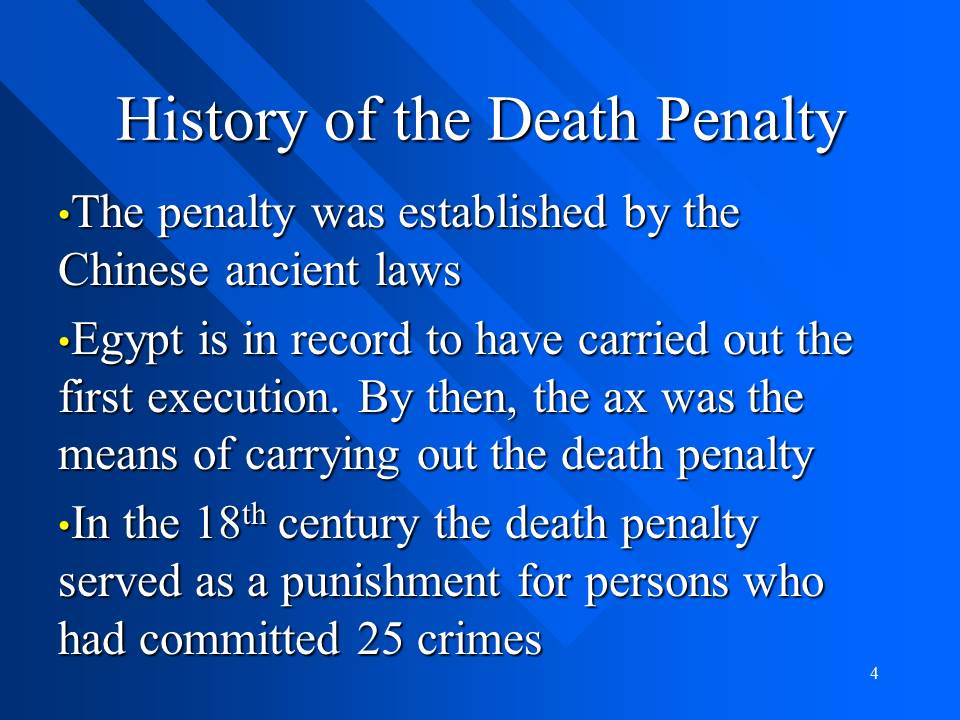

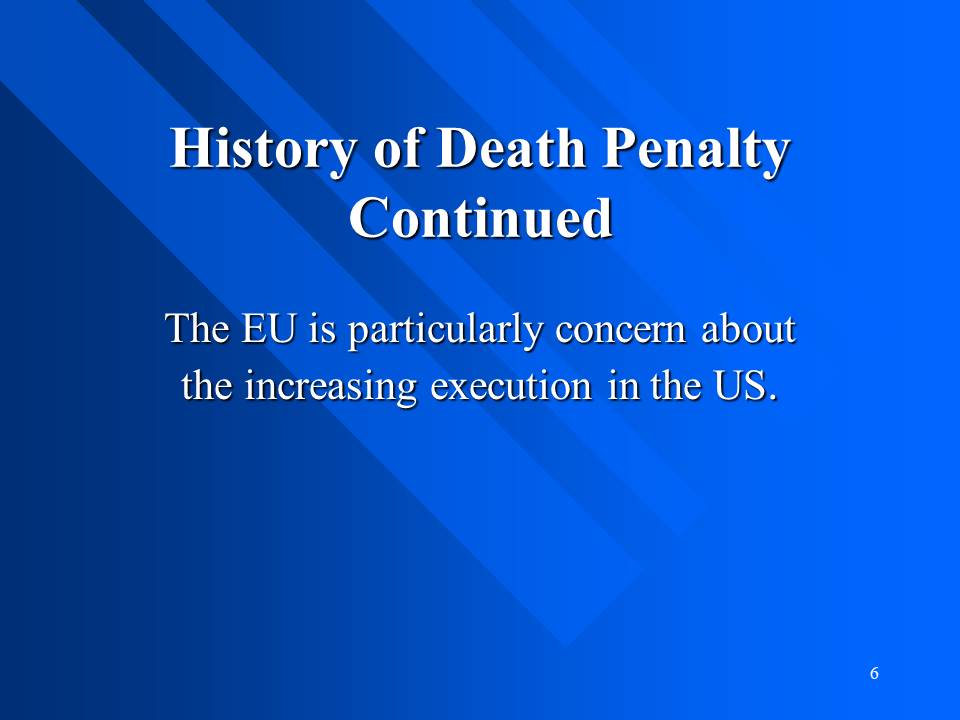
Mean of Execution
The means of execution used are:
- Lethal injection where drugs in lethal proportions are administered to the victim
- Electrocution; this is accomplished by means of an electric chair
- Lethal gas whereby the person in subjected to lethal gases
- Hanging which is accomplished by using a rope tied around the neck of the person
Firing squad whereby a person is shot at the back specifically at the back of the head or neck.
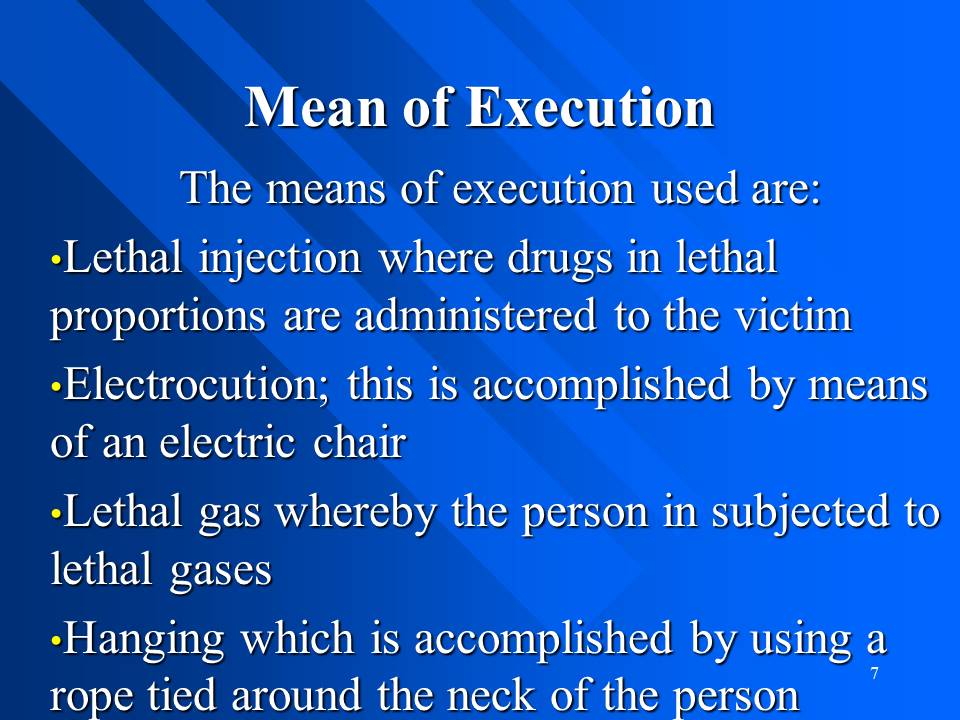
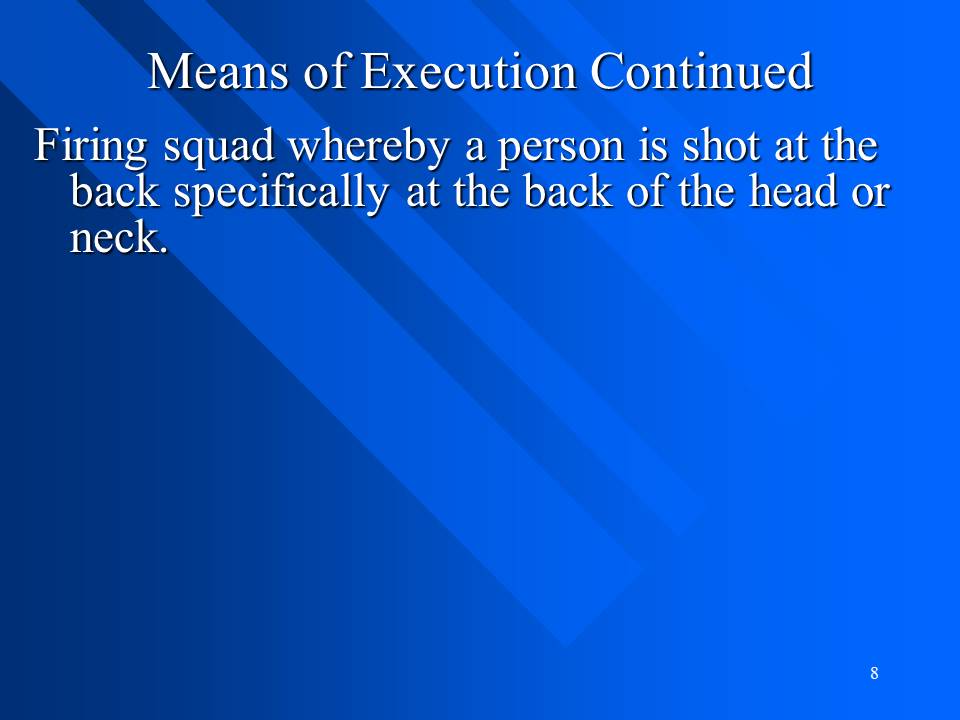
Arguments Against the Death Penalty
- Reliability
- Disproportionate Execution
- The Cost Factor
- Deterrence of crime

Reliability
- Exoneration due to DNA evidence has continuously freed persons who have been on death rows.
- Up to 2005, the number of people released from the death rows was 119.
- It has been shown that up to 23 innocent people have been executed.

Disproportionate Executions
- An insignificant portion of murders is executed; death row inmates actually executed are two percent.
- There was reversal of about 68 percent of the death penalty convictions for the period between 1973 and 1995.
- Minority groups are a major participant of the death penalty.
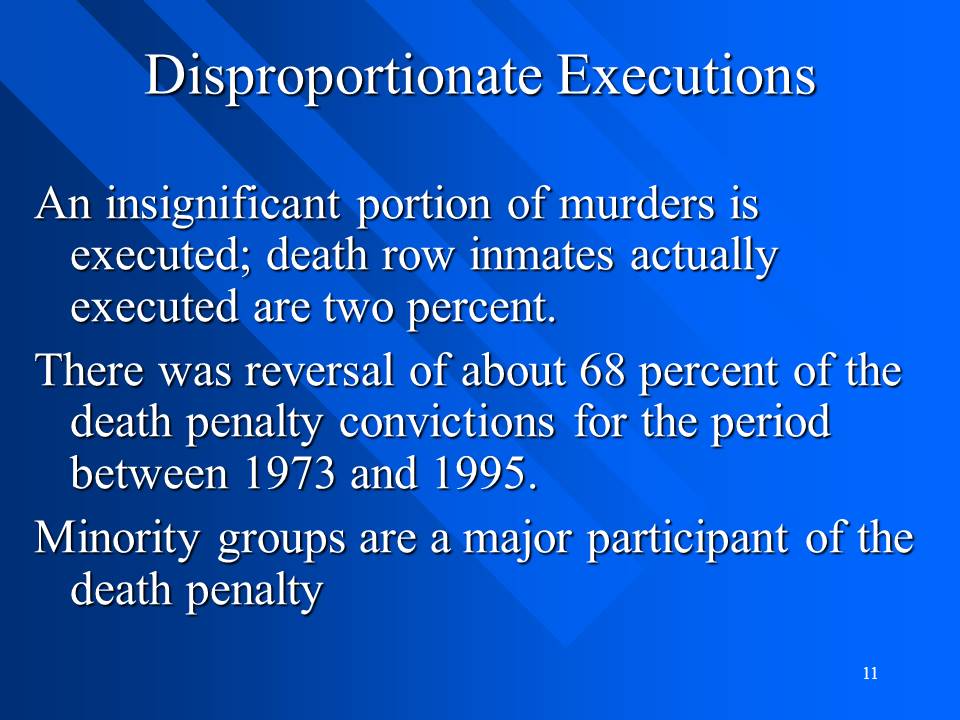
The Cost Factor
- Expenses related to death penalties are huge and taxing to individuals and legal systems.
- A death penalty case costs four times more than a normal murder case trial.
- Up to 700,000 US dollar are used in an automatic appeal process.
- Execution costs are estimated to value up to 1.2 million dollars, for instance, it cost the State of Florida up to 57 million US dollars to undertake executions between the year of 1973 and 1998.
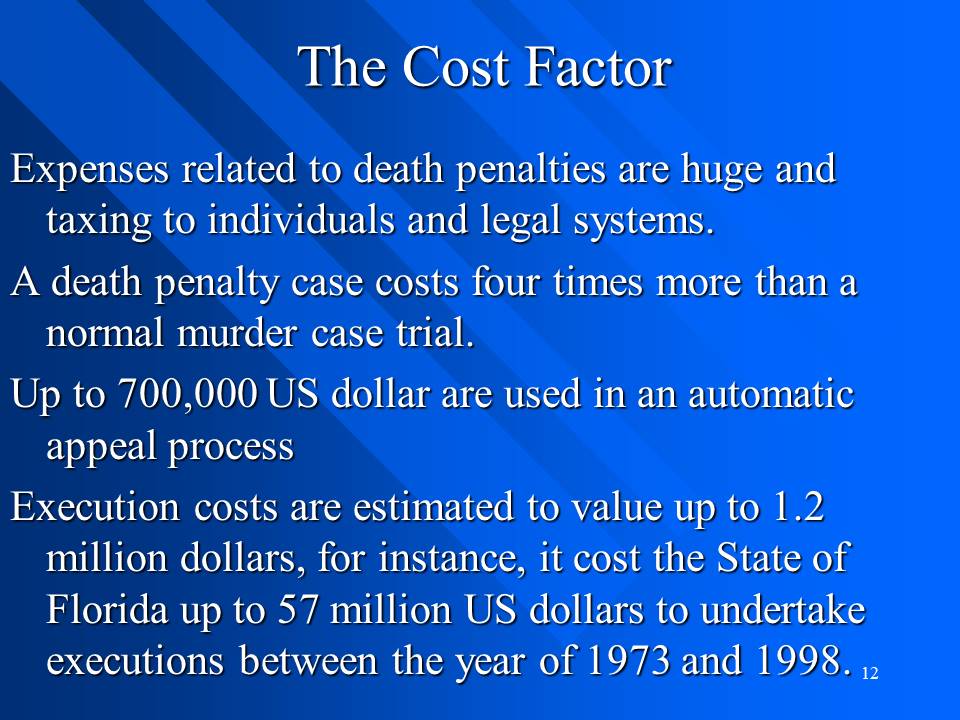
Deterrence of Crime
- It has been shown that the death penalty states in the US are still leading in the number of murders committed.
- Texas and Oklahoma had the most number of death penalties in 2003 but the murder rates in the two were above the national average.
- In 2002, the states advocating for death penalty increased while in the states against murder penalty the rates decreased.
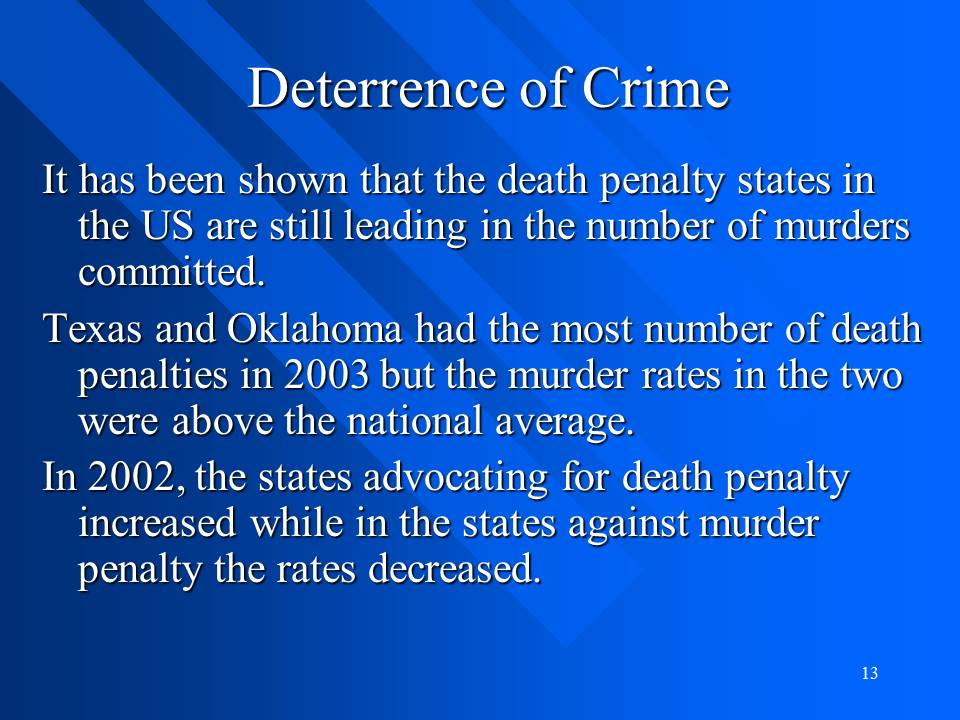
Conclusion
- A number of people have been exonerated following fresh evidence from DNA and other sources implying possibilities of innocent people already executed.
- The death penalty has not proved to deter crime but instead spurred them.
- The death penalty has a long history but seemingly gradually losing support in most countries of the world.
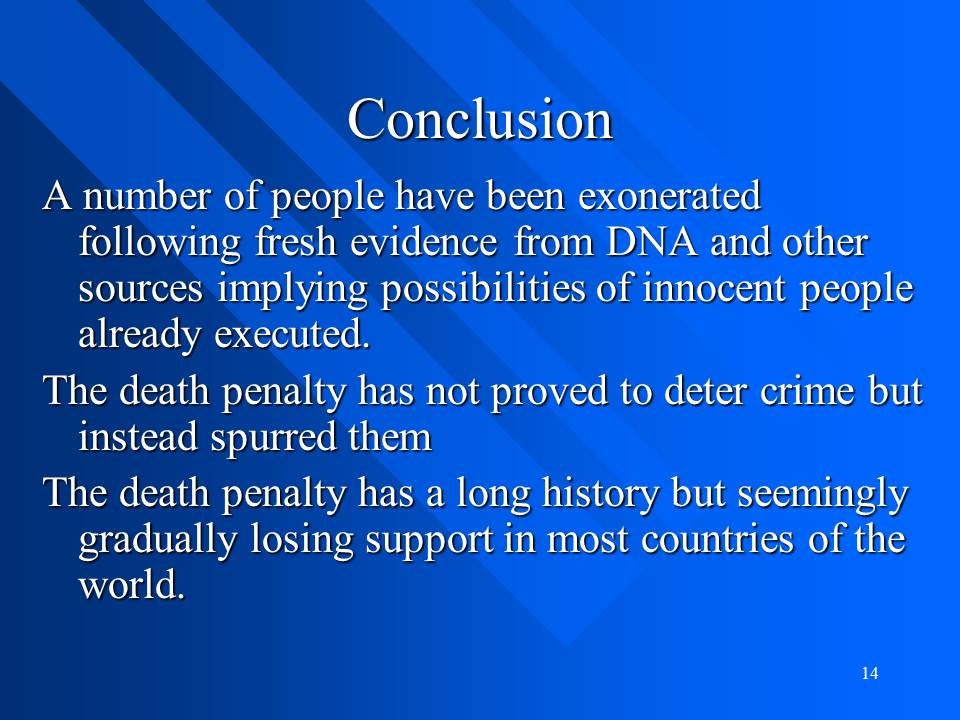
References
Kari & Associates. (2008). Punishment: Death Penalty. Web.
The Death Penalty. (2008). Methods of Execution. Web.